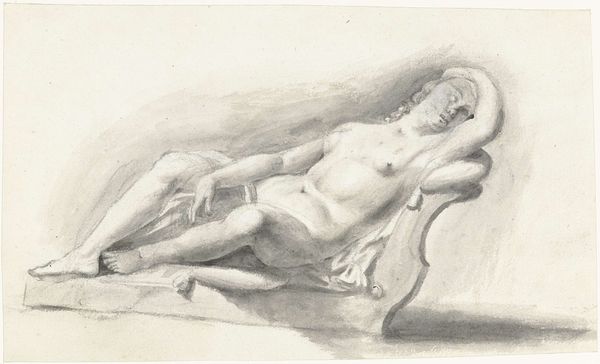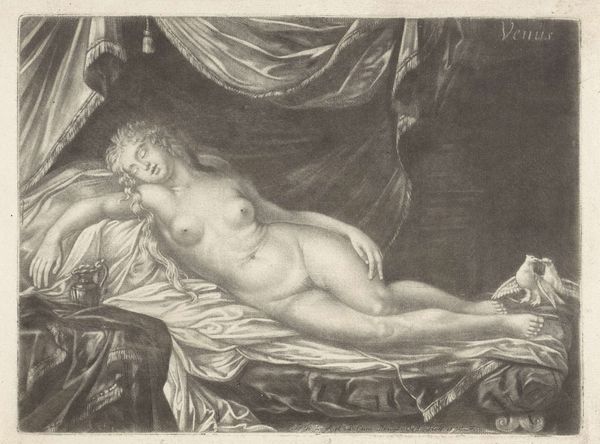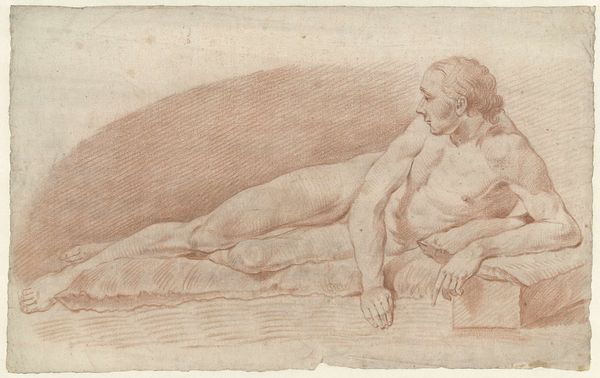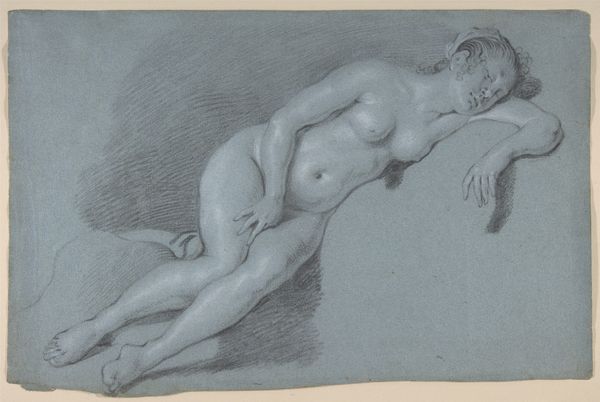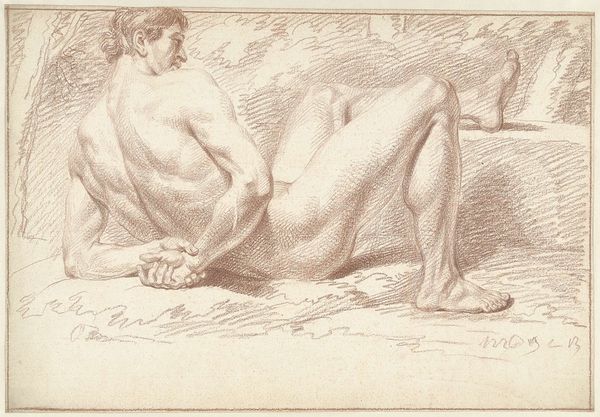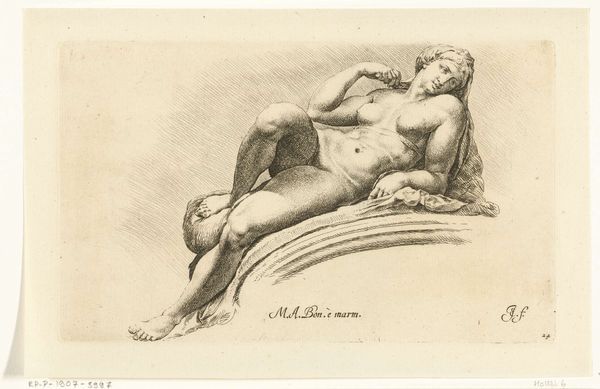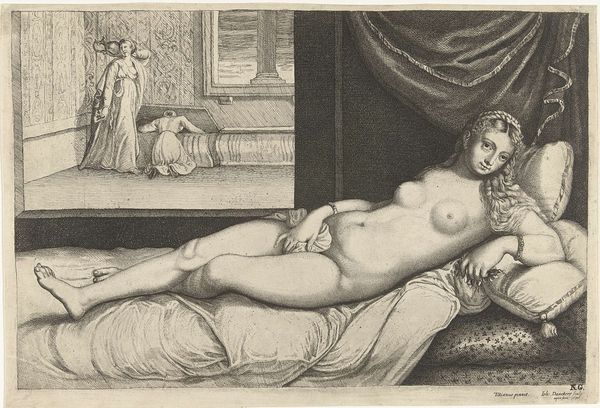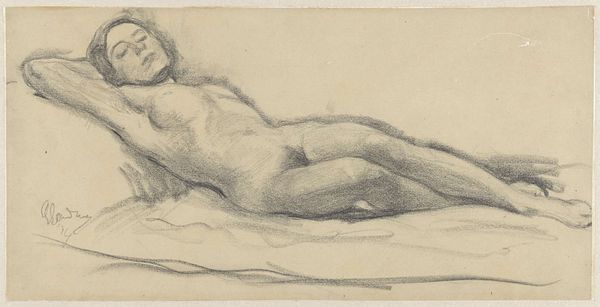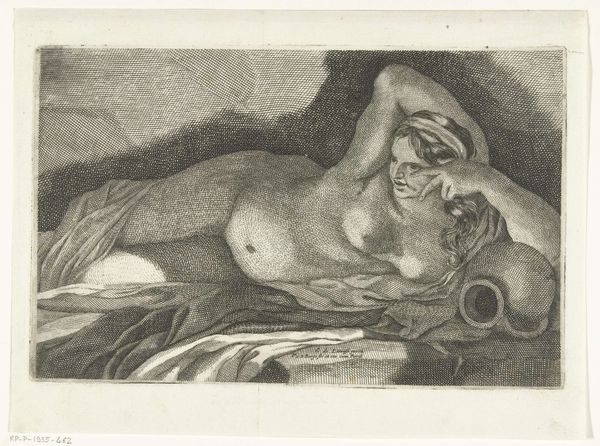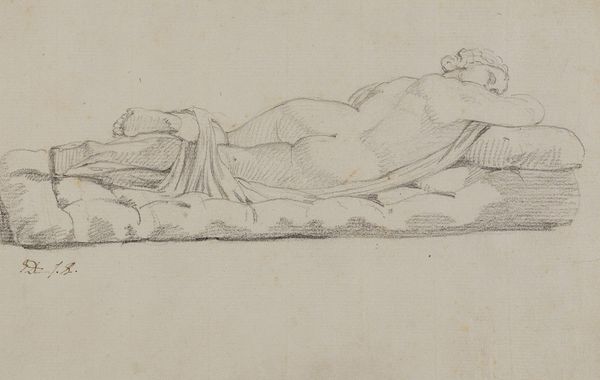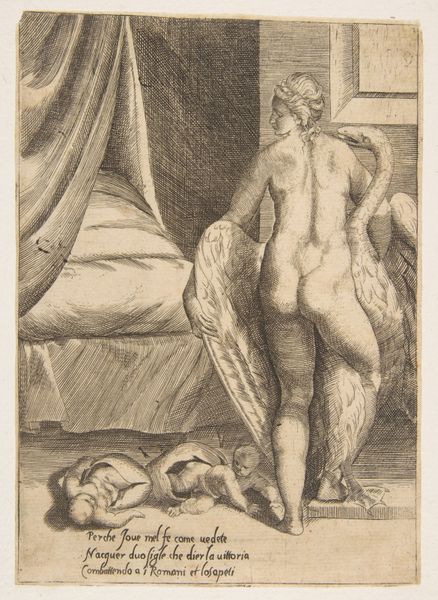
drawing, ink, pen
#
drawing
#
baroque
#
pen sketch
#
landscape
#
ink
#
pen
#
nude
Dimensions: height 128 mm, width 180 mm
Copyright: Rijks Museum: Open Domain
Editor: This pen and ink drawing, "A Sleeping Nymph Seen From The Back" by Willem Basse, probably created sometime between 1633 and 1672, is quite striking. The reclining figure almost fades into the landscape visible in the background. What captures your imagination when you look at this piece? Curator: Oh, this nymph, lost in slumber! For me, it's the unexpected vulnerability alongside a feeling of powerful detachment. She’s exposed, yet her dreamscape, that barely sketched landscape in the distance, is her own private, untouchable world. Do you feel that interplay between exposure and retreat? Editor: Absolutely. There's this tension, almost like she's dreaming of escaping the very gaze of the viewer. It is interesting. Curator: Indeed. Now, Basse was working during a period when idealized nudes were quite fashionable. However, notice the almost brutal honesty in the lines used to render her form – a slight sagging here, a curve there. It avoids complete idealization. Also, the detailed treatment of the linens contrasts with the more ethereal background landscape. What do you make of this? Editor: I see what you mean. It grounds her. Maybe it brings her into the "real world", despite being nude in this imaginary or fantastical space? Curator: Perhaps. It adds a layer of complexity. Basse avoids simple fantasy and asks us to consider her physicality, her possible thoughts and feelings even. And perhaps also, the feeling we experience as viewers observing someone in a very intimate state. What an image, it feels as modern to me as it probably felt at the time! Editor: Wow, I'm really looking at it in a new way now. It's so much more than just a nude study. Curator: Exactly! These supposed fleeting sketches from the masters still ignite and transform how we think about art in the present moment.
Comments
No comments
Be the first to comment and join the conversation on the ultimate creative platform.

